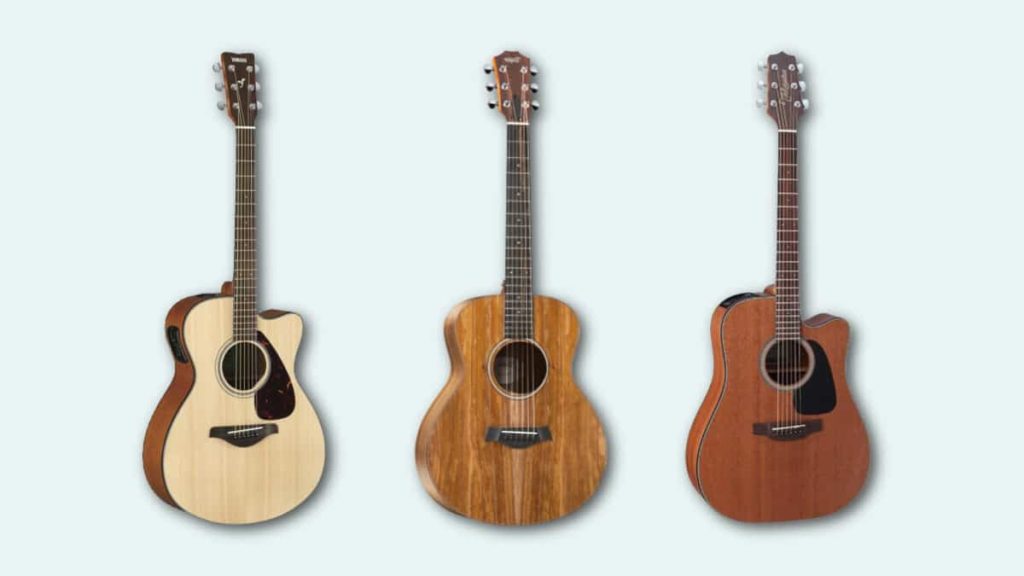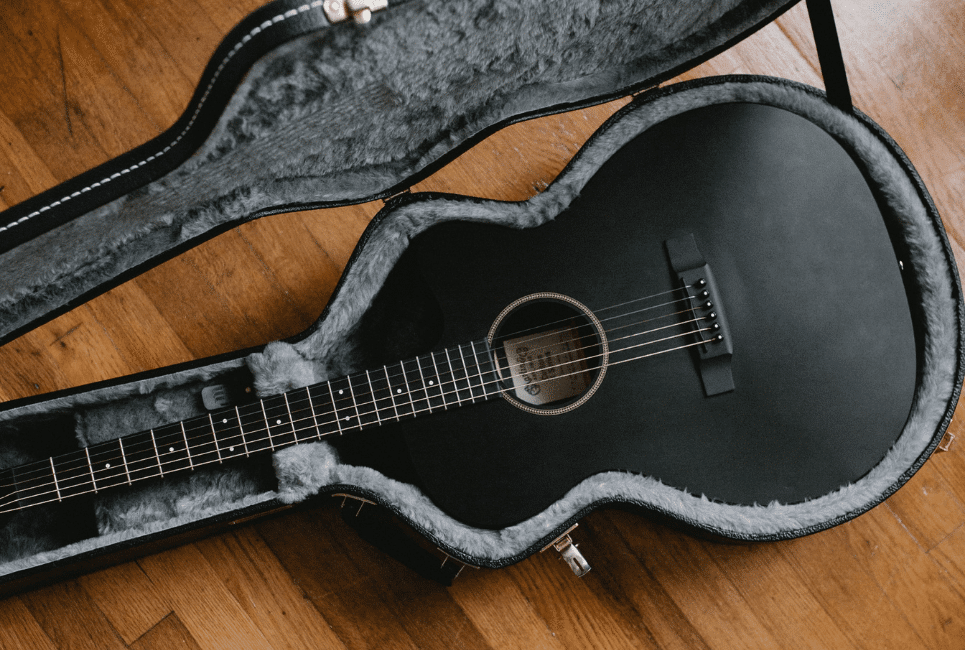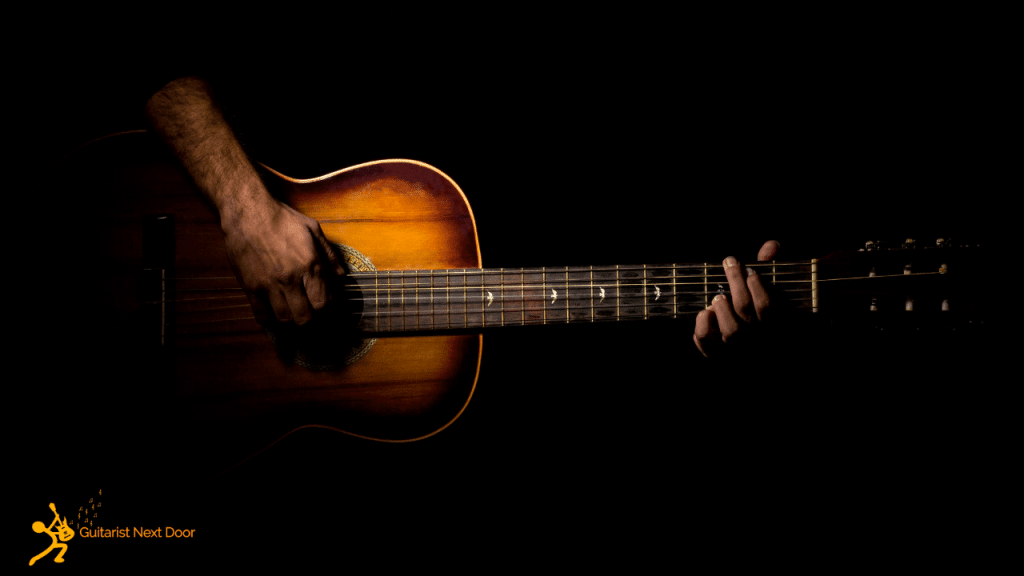Looking to find the perfect acoustic guitar to bring out your inner blues musician? Look no further! In this ultimate guide, we’ll take you through the essential factors to consider when choosing the best acoustic guitar for blues. From the type of wood used in the guitar’s construction to the body shape and size, we’ll break down everything you need to know to make an informed decision. So whether you’re a seasoned blues player or just starting out, get ready to find your perfect match and unlock that soulful sound you’ve been craving.
Understanding the Acoustic Guitar for Blues
If you’re a fan of blues music, you know the distinct sound that only an acoustic guitar can provide. The rich, warm tones and soulful vibes are what make the acoustic guitar the perfect instrument for playing the blues. In this comprehensive guide, we’ll take a deep dive into all aspects of acoustic guitars for blues, from the history and unique characteristics to the factors to consider before buying one. Whether you’re a seasoned blues musician or a beginner looking to delve into this genre, this article will help you understand and choose the best acoustic guitar for blues.
The History of Blues Acoustic Guitars
To truly appreciate the acoustic guitar for blues, it’s essential to understand its historical roots. The blues originated in the late 19th century in the African-American communities of the Deep South, particularly in the Mississippi Delta region. During this time, African-Americans would use acoustic guitars as their primary means of musical expression. The blues provided an outlet to express their emotions and experiences, and the acoustic guitar became the perfect accompaniment. Stalwarts of the genre such as Robert Johnson and Muddy Waters paved the way for future generations of blues musicians, solidifying the acoustic guitar’s place in blues history.
Unique Characteristics of Acoustic Guitars for Blues
Acoustic guitars for blues possess distinct characteristics that set them apart from other types of guitars. These unique features contribute to the bluesy sound that we all love. One of the defining characteristics is the use of heavier gauge strings, which produce a fuller and more resonant tone. The body shape and size of the guitar also play a significant role, allowing for greater projection and a bold sound. Another notable characteristic is the preference for certain tonewoods, such as mahogany and spruce, known for their warm and rich tones. All these elements come together to create an instrument perfectly suited for the blues.
Benefits of Choosing an Acoustic Guitar for Blues
When it comes to playing blues music, choosing an acoustic guitar offers several benefits. Firstly, the acoustic guitar provides a raw and organic sound that resonates deeply with the aesthetics of the blues genre. Unlike electric guitars, the acoustic guitar doesn’t require any additional amplification, allowing you to play and express yourself anywhere, from intimate jam sessions to large performances. Additionally, acoustic guitars are versatile instruments that can be played with various techniques, including fingerstyle and slide, enabling you to explore different sounds and styles within the blues. Ultimately, choosing an acoustic guitar for blues opens up a world of possibilities and endless opportunities for musical expression.
Factors to Consider Before Buying an Acoustic Guitar for Blues
Before making a purchase, there are several important factors to consider when buying an acoustic guitar for blues. These factors will help ensure that you find the perfect instrument that meets your needs and preferences. Let’s take a closer look at each of these factors:
Budget
Determining your budget is the first step in finding the right acoustic guitar for blues. Acoustic guitars can range significantly in price, so it’s important to establish a comfortable price range. Keep in mind that higher-end guitars often come with better build quality and tonewoods, but there are still excellent options available at lower price points.
Body Type and Shape
Acoustic guitars come in various body types and shapes, each contributing to the overall sound and playability. Common body types for blues include dreadnought, parlor, grand auditorium, and O and OO size. Dreadnought guitars offer a powerful and balanced sound, while parlor guitars provide a more intimate and bluesy tone. Grand auditorium guitars strike a balance between the two, making them versatile options for blues players. O and OO size guitars offer comfort and ease of playability, perfect for those with smaller frames or players who prefer a more intimate sound.
Tonewoods
Tonewoods play a crucial role in shaping the sound of an acoustic guitar. For blues, tonewoods such as mahogany, spruce, and rosewood are commonly used. Mahogany provides warm and rich tones with a strong midrange presence, while spruce offers a balanced and versatile sound. Rosewood, known for its deep lows and sparkling highs, adds a touch of complexity to the overall tonal palette. Consider the tonewoods used in the guitar’s top, back, and sides to find a sound that resonates with your blues playing style.
String Action and Neck Shape
String action refers to the height of the strings above the fretboard. It’s essential to find a guitar with comfortable string action that allows for easy fretting and strumming. Neck shape also plays a role in comfort and playability. Some players may prefer a slimmer neck, while others may find a chunkier neck more comfortable. Try out different neck shapes and determine which one feels the most natural and ergonomic for your playing style.
Pickups and Electronics
If you plan on performing with your acoustic guitar in live settings, consider whether you need built-in pickups and electronics for amplification. Pickups can capture the natural sound of your guitar and transmit it to an amplifier, allowing for increased volume and control. Check if the guitar you’re considering has onboard preamps and EQ controls for shaping your tone. Keep in mind that not all acoustic guitars come with pickups and electronics, so this is an important factor to consider based on your specific needs.
Brand Reputation and Quality
Consider the reputation and quality of the brand when purchasing an acoustic guitar. Established brands with a proven track record often provide consistent quality and reliable customer support. Research reviews and seek recommendations from experienced guitarists to ensure you’re investing in a reputable and reliable instrument.
With these factors in mind, you can make an informed decision when choosing the right acoustic guitar for your blues journey.
Different Acoustic Guitar Body Types Suitable for Blues
When it comes to blues music, different acoustic guitar body types offer distinct tonal characteristics and playing experiences. Here are some common body types suitable for blues:
Dreadnought
Dreadnought guitars are known for their large size and full-bodied sound. They offer a powerful and balanced tone, making them a popular choice among blues guitarists. Dreadnought guitars have a deep, rich bass response and clear highs, providing excellent projection and volume.
Parlor
Parlor guitars are smaller in size, providing a more intimate and bluesy sound. They have a midrange-focused tone, making them ideal for fingerstyle blues playing. Despite their compact size, parlor guitars can still produce a surprising amount of volume and depth.
Grand Auditorium
Grand auditorium guitars offer a versatile sound that suits various playing styles, including blues. They are slightly smaller than dreadnought guitars and strike a balance between the boldness of the dreadnought and the intimacy of the parlor. Grand auditorium guitars provide a clear and articulate sound with a well-defined midrange.
O and OO Size
O and OO size guitars are even smaller and more comfortable to play, making them suitable for players with smaller frames or those who prefer a more intimate sound. These guitars produce a warm, balanced tone with a focus on the midrange frequencies. O and OO size guitars are perfect for acoustic blues and fingerstyle playing.
Each body type offers its own unique sonic characteristics, so consider your playing style and tonal preferences when choosing an acoustic guitar for blues.
Important Tonewoods for Blues Acoustic Guitars
Tonewoods have a significant impact on an acoustic guitar’s sound, and for blues, there are a few important ones to consider:
Mahogany
Mahogany is a highly sought-after tonewood known for its warm and rich tones. It provides a strong midrange presence with a balanced representation of lows and highs. Blues guitarists often appreciate the depth and clarity that mahogany offers, making it an excellent choice for acoustic guitars used in blues music.
Spruce
Spruce is one of the most popular tonewoods used in acoustic guitars. It offers a versatile sound, making it well-suited for blues music. Spruce provides a balanced tone with excellent projection, ensuring your blues licks and chords have clarity and definition. It pairs well with a variety of playing styles and complements the dynamic nature of blues music.
Rosewood
Rosewood is known for its rich, full-bodied sound with deep lows and sparkling highs. It adds a touch of complexity and warmth to an acoustic guitar’s tone, making it an excellent tonewood for blues. The distinct tonal properties of rosewood contribute to the authenticity and soulfulness that blues players seek.
When considering tonewoods, keep in mind that the choice of tonewood for the guitar’s top, back, and sides can have a significant impact on the overall sound and tonal characteristics of the instrument. It’s worth experimenting with different tonewood combinations to find the perfect match for your blues playing.
Understanding String Action and Neck Shape for Blues
String action and neck shape are crucial elements to consider when choosing an acoustic guitar for blues. Let’s explore each of these aspects:
String Action
String action refers to the height of the strings above the fretboard. It affects how easy or challenging it is to press down the strings for various techniques, such as bending and sliding. For blues playing, a comfortable string action is essential to ensure smooth and effortless playing. Higher string action can provide more sustain and resonance but might require more finger strength. Lower string action, on the other hand, allows for faster playing and makes it easier to bend strings. Finding the right balance of string action that suits your playing style and finger strength is crucial for optimal playability while maintaining a good tone.
Neck Shape
The shape of the guitar’s neck significantly impacts how comfortable it feels to play and the overall playability of the instrument. Blues players often have personal preferences when it comes to neck shape. Some may prefer a slim, fast-playing neck that allows for quick chord changes and intricate blues runs. Others may prefer a chunkier, more substantial neck that offers more support and feels more substantial in the hands during long playing sessions. Trying out guitars with different neck shapes is essential in finding the right fit for your individual playing style and comfort.
By considering both string action and neck shape, you can ensure that your acoustic guitar is not only tuned to your preferred playing style but also offers optimal comfort for extended periods of blues playing.
Exploring Pickups and Electronics for Amplification
While acoustic guitars can produce a resonant and robust sound on their own, there may be instances where amplification is necessary, especially for live performances. Here are a few key considerations when exploring pickups and electronics for acoustic guitars:
Types of Pickups for Acoustic Guitars
There are several types of pickups available for acoustic guitars. The most common types include piezo, soundhole, and magnetic pickups. Piezo pickups are often mounted under the saddle and provide a crisp and vibrant sound. Soundhole pickups capture the acoustic sound in a natural and balanced way, and magnetic pickups offer a warmer, more electric guitar-like sound. It’s essential to try out different pickups and determine which one best suits your desired tone and playing style.
Onboard Preamps and EQ
Some acoustic guitars come with built-in preamps and EQ controls, allowing you to shape your tone and adjust the volume in a live setting. Onboard preamps offer additional control and flexibility, ensuring that your amplified sound accurately represents your acoustic guitar’s true character. Consider whether having onboard preamps and EQ controls is important to you when choosing an acoustic guitar for blues.
Acoustic Amplification Options
Choosing the right acoustic amplifier is essential for achieving the desired sound when amplifying your acoustic guitar for blues. Acoustic amplifiers are designed to reproduce the natural sound of acoustic instruments faithfully. Look for amplifiers that offer a warm and balanced tone with sufficient power for your performances. Consider the venue size and your specific needs to find an acoustic amplifier that suits your blues playing requirements.
Exploring pickups and electronics for amplification can enhance your acoustic guitar’s versatility and allow you to adapt to various performance settings without compromising its natural sound.
Top Brands and Models for Acoustic Guitars for Blues
When it comes to acoustic guitars for blues, certain brands and models have stood the test of time and are highly regarded within the blues community. Here are some top brands and models worth considering:
Gibson J-45
The Gibson J-45 is an iconic blues guitar with a rich history. Known for its warm and balanced tone, the J-45 offers excellent projection and a distinctive blues sound. The solid spruce top paired with mahogany back and sides produces a well-rounded tone that suits a wide range of blues styles.
Martin D-28
The Martin D-28 is another legendary acoustic guitar favored by many blues players. It offers a full and resonant sound with excellent clarity. The combination of a solid spruce top and rosewood back and sides provides a remarkable tonal range, making it an ideal choice for blues musicians seeking versatility.
Fender PM-2
The Fender PM-2 embodies the vintage blues spirit with its parlor guitar body and rich tonal characteristics. It features a solid spruce top paired with mahogany back and sides for a warm and intimate sound. Blues players will appreciate the PM-2’s excellent playability and classic design.
Taylor 814ce
The Taylor 814ce is a high-end acoustic guitar that delivers exceptional sound quality, making it well-suited for blues. It features a solid Sitka spruce top, rosewood back and sides, and Taylor’s renowned Expression System 2 pickup. The combination of premium tonewoods and advanced electronics ensures a rich and balanced tone when plugged in.
These top brands and models offer outstanding craftsmanship, tonal quality, and playability, making them highly recommended choices for blues musicians.
Acoustic Guitar Accessories for Blues Players
To maximize your playing experience and ensure the longevity of your acoustic guitar, consider investing in a few essential accessories tailored for blues players:
Picks and Fingerstyle Techniques
Blues guitarists often use a combination of picking with their fingers and playing with a pick. Explore different types of picks and find one that provides the right balance of control and articulation for your playing style. Experiment with fingerpicking techniques and find the perfect blend of picking and strumming to enhance your blues playing.
Slides and Bottlenecks
Slide guitar playing is integral to blues music, allowing you to achieve soulful and expressive tones. Invest in a high-quality slide or bottleneck, typically made of glass, metal, or ceramic, to explore the limitless possibilities of slide guitar playing. Experiment with different slide techniques and find your unique slide guitar voice.
Straps and Strumming Techniques
For live performances, a comfortable and reliable guitar strap is essential. Look for a strap that distributes the weight of the guitar evenly and provides sufficient support during long playing sessions. Additionally, explore different strumming techniques to add depth and variety to your blues playing.
Acoustic Guitar Cases
Protecting your acoustic guitar is paramount, especially if you plan on taking it on the road or traveling. Invest in a sturdy and well-padded acoustic guitar case to safeguard your instrument from potential damage. Hardshell cases offer optimal protection, while gig bags provide a lightweight and convenient option for transporting your guitar.
Maintenance and Care
Regular maintenance and care will extend the life of your acoustic guitar and ensure its optimal performance. Keep your guitar clean by wiping it down after each playing session and regularly restringing it. Consider using guitar polish and conditioner to keep the wood nourished and protected. It’s also a good idea to have your guitar professionally set up periodically to maintain optimal playability and sound quality.
These accessories will enhance your playing experience and help you take care of your acoustic guitar, ensuring it remains in top-notch condition for years to come.
How to Test and Choose the Perfect Acoustic Guitar for Blues
When it comes to choosing the perfect acoustic guitar for blues, nothing beats trying out different guitars in person. Here’s a step-by-step guide on how to test and choose the ideal acoustic guitar for your blues playing:
Trying Out Different Guitars
Visit local music stores and try out various acoustic guitars to get a sense of their feel, sound, and playability. Pay attention to how comfortable the guitar is to hold and play, as well as how easy it is to reach all frets. Take your time and test different guitars to find the one that resonates with you.
Assessing Sound Quality and Projection
Play a variety of blues licks and chords on each guitar to assess its sound quality and projection. Listen for clarity, resonance, and the overall tonal characteristics of each instrument. Consider whether the guitar’s sound matches your desired blues tone and if it has the projection you need for different playing situations.
Comfort and Playability
Ensure that the guitar feels comfortable to hold and play, especially during extended playing sessions. Pay attention to the neck shape and string action, as they directly affect playability. A comfortable and ergonomically designed guitar will allow for effortless playing and enjoyable blues jamming.
Considering Personal Preferences and Style
Ultimately, choose a guitar that aligns with your personal preferences and playing style. Each guitarist has their unique touch and tonal aspirations. Consider factors such as tonewood preferences, body shape, and the overall vibe of the guitar. Trust your instincts and choose the acoustic guitar that resonates with you and inspires your blues playing.
By following these steps and trusting your own judgment, you’ll be well on your way to finding the perfect acoustic guitar for blues.
Where to Buy Acoustic Guitars for Blues
Once you’ve determined the specifications and features you desire in an acoustic guitar for blues, it’s time to find the right place to make your purchase. Here are a few options to consider:
Local Music Stores
Local music stores often have a wide selection of acoustic guitars for you to test and choose from. The advantage of visiting a local store is that you can personally try out the guitars before making a decision. Sales associates can also provide guidance and answer any questions you have regarding specific models, making the buying process more personalized.
Online Marketplaces
Online marketplaces offer a convenient way to browse a vast selection of acoustic guitars, including those specifically tailored for blues. Websites such as Guitar Center, Sweetwater, and Reverb provide detailed product descriptions, customer reviews, and competitive pricing. It’s important to research thoroughly and read reviews to ensure you’re purchasing from a reputable seller.
Used Guitars and Vintage Shops
If you’re open to purchasing a used or vintage guitar, exploring local vintage shops and online platforms dedicated to used gear can be a treasure trove for blues enthusiasts. Pre-owned guitars often offer unique character and, in some cases, exceptional value for money. However, it’s crucial to carefully evaluate the condition and authenticity of the instrument before making a purchase.
Consider your comfort level, budget, and desired purchasing experience when deciding where to buy your acoustic guitar for blues.
In conclusion, understanding the acoustic guitar for blues involves exploring its history, unique characteristics, and tonal considerations. By considering factors such as budget, body type, tonewoods, string action, and pickups, you can make an informed decision when purchasing an acoustic guitar for blues. Trying out different guitars, assessing sound quality and playability, and considering personal preferences will help you choose the perfect instrument for your blues journey. Whether you end up with a legendary Gibson J-45 or a versatile Martin D-28, the joy of playing the blues on an acoustic guitar that resonates with you is an experience like no other.











